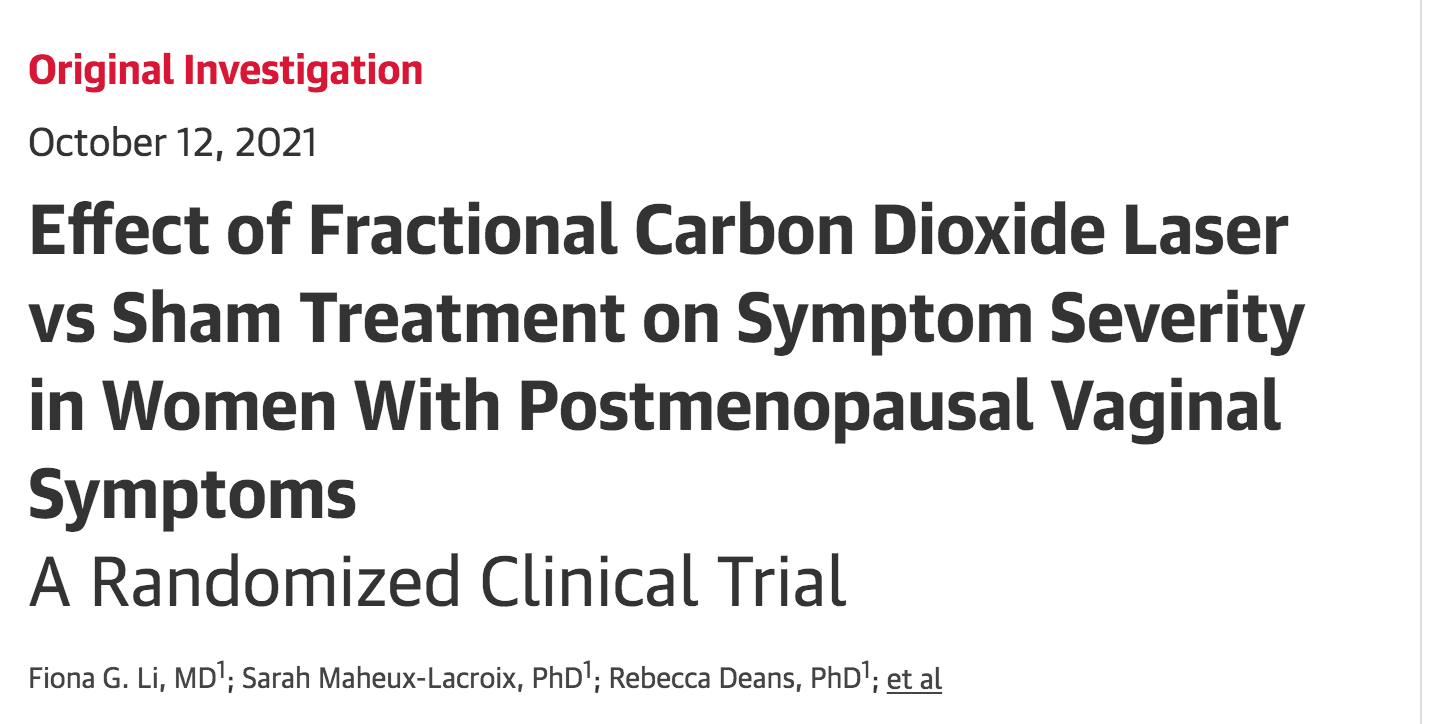
Detailed history Assessment of risk factors Full clinical examination Investigations: Routine Pap smear Appropriate biopsy Smear Cytology TVS HSG combined with TVS Saline sono-hysterography CT MRI (as required)
Postmenopausal bleeding (Pmb) and benign conditions Study in rural belt of India
Benign conditions though most frequent and can cause considerable distress. Study: In Gynecology department, RIMS, a rural based tertiary center (Jan’10-July’12) patients, 1200 Pmb. Aim To exclude malignancy To confirm diagnosis To treat accordingly.
Para<=5: 513 (57 %) Low SES: 700 (78%) No circumcision: 555 (61.66%) belonging to Hindu community
50-54 yrsEndometrial (Em) yrs Endometrial (Em)
300(25%) in present study had malignant lesions. Community education, mass screening, regular follow up, timely intervention is necessary even with slight bleeding. Em. Thickness >4mm, bulky uterus considered malignant unless until proved..
QUESTIONS Thank you Dr Gopa Chowdhury Asstt. Prof, RIMS, Ranchi INDIA

The term post menopause is applied to women who have not experienced a menstrual bleed for a minimum of 12 months, assuming that they do still have. - ppt download
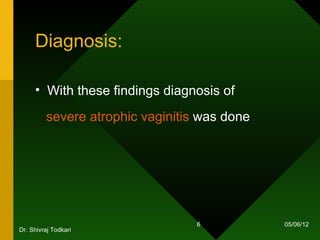
Postmenopausal bleeding
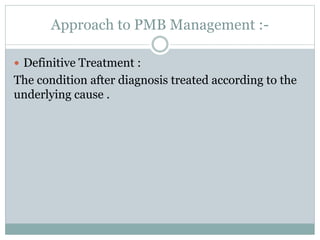
Post menopausal bleeding seminar
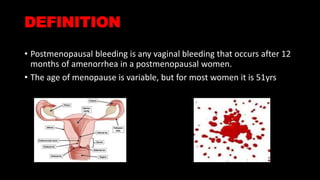
Post menopausal bleeding
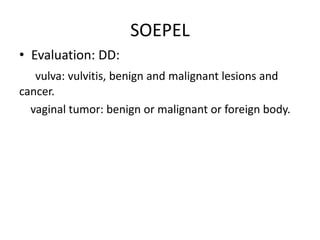
Postmenopausal bleeding

Postmenopausal bleeding - ppt download
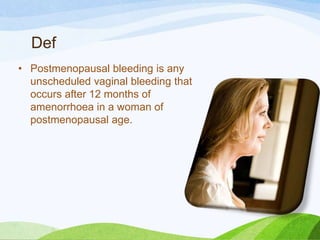
Postmenopausal uterine bleeding

Postmenopausal bleeding
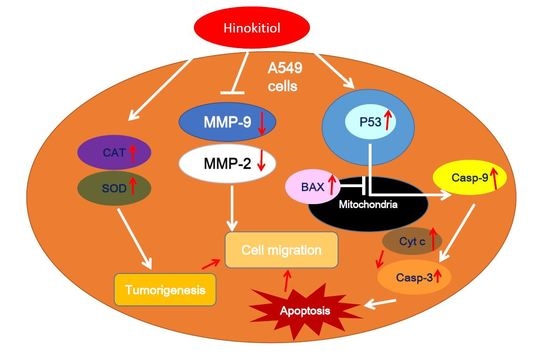
IJMS April 2018 - Browse Articles

Postmenopausal bleeding (Pmb) and benign conditions Study in rural belt of India. - ppt download
